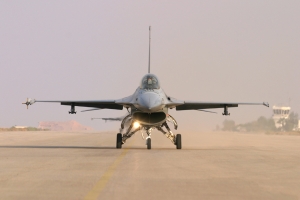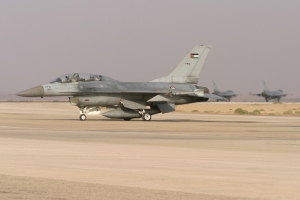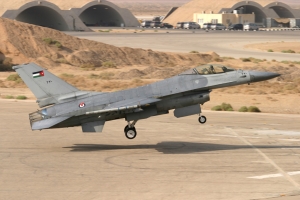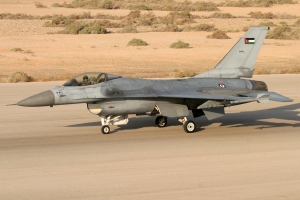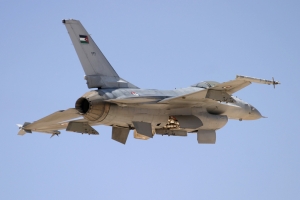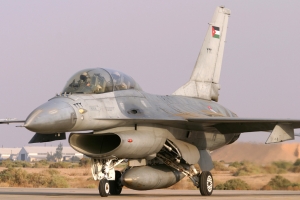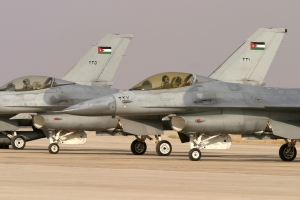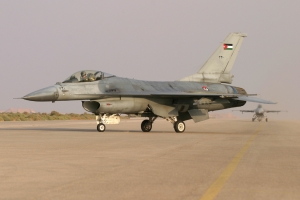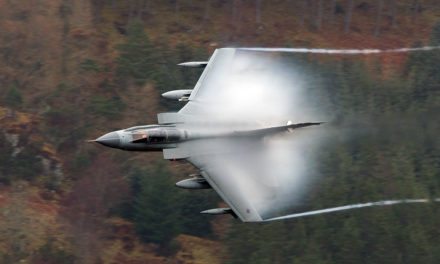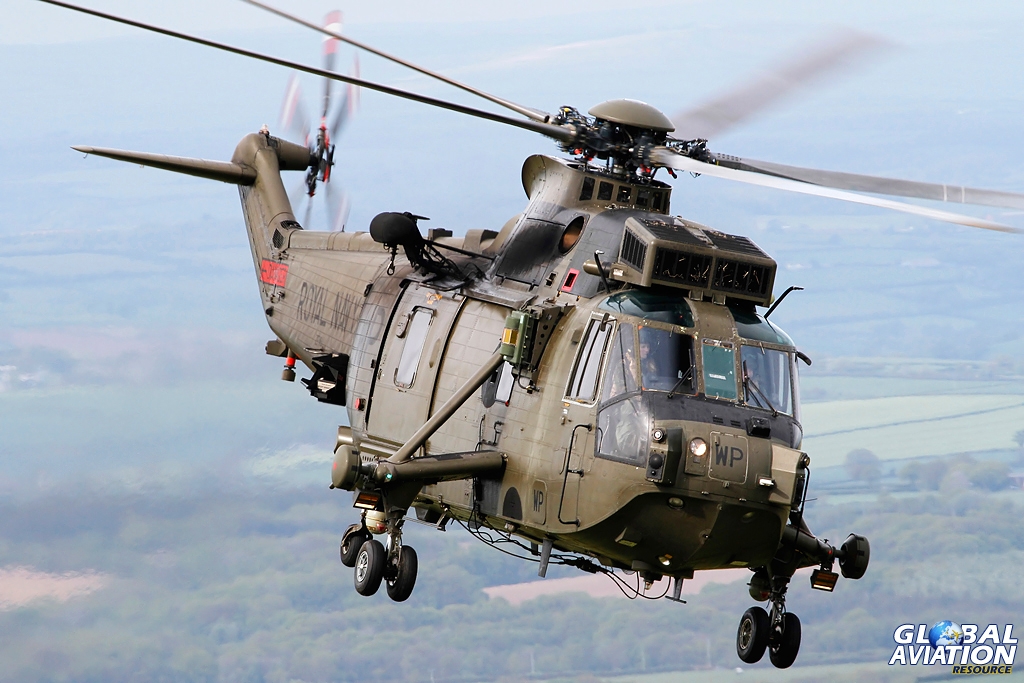One of a number of States in the Middle East to operate the F-16, Jordan has been a keen purchaser of second hand jets over the last two decades, building up a substantial fleet in the process. Paul Dunn gives an overview of the RJAF F-16 fleet, with images by Kevin Wills.

© Kevin Wills – www.globalaviationresource.com
In 1994, Jordan signed a peace treaty with Israel, bringing to an end around 40 years of animosity between the two neighbouring nations, which had led to war on several occasions. This new era of peace brought some concessions from the US, in particular relating to the supply of military hardware. The Jordanian government quickly made known its desire to bolster its Air Force (the Royal Jordanian Air Force) with the acquisition of F-16s, in the form of used, ex-USAF airframes.

© Kevin Wills – www.globalaviationresource.com
In the mid-1990s, the end of the Cold War was bringing with it large shifts in the size and composition of the USAF; increasing numbers of surplus F-16C/Ds were passing from the reduced number of active duty units, and mainly replacing earlier aircraft in service with the ANG. The Guard had also seen its air defence role virtually disappear, and these two factors collectively meant the demise of the F-16 ADF (Air Defence Fighter). This was the only version of the F-16 to serve the US as a dedicated fighter aircraft, and equipped many ANG units in the late 1980s and early 1990s. However, its career as such was cut short by the change in the international political situation, and aircraft were placed in storage with plenty of life left in them. These jets were to prove popular with several countries looking to add a capable interceptor aircraft to their air forces at a relatively reasonable cost.
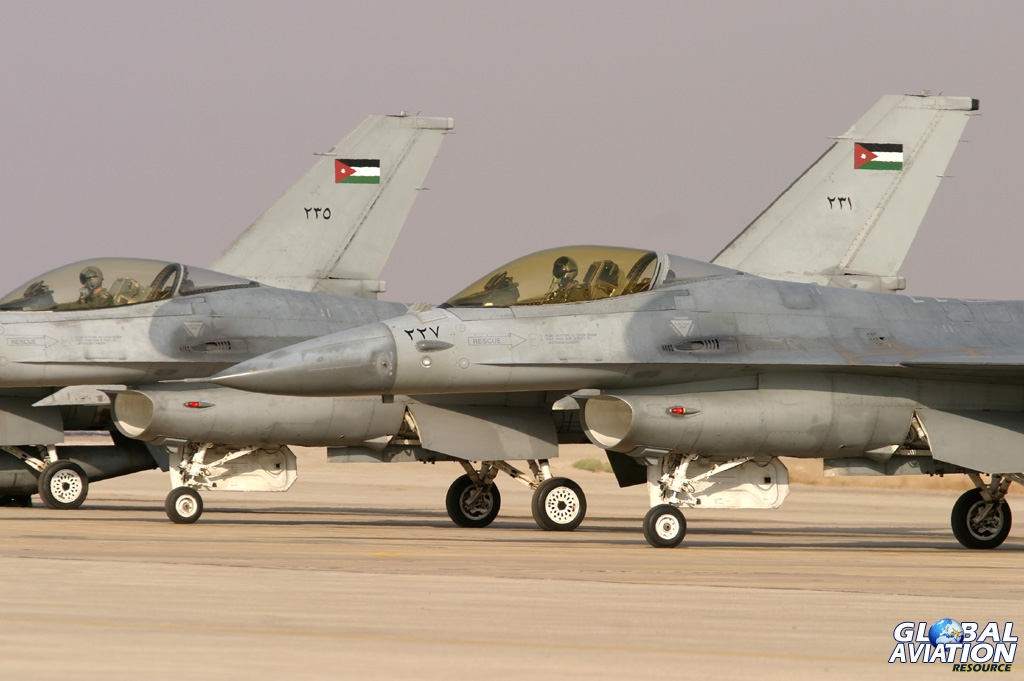
© Kevin Wills – www.globalaviationresource.com
Jordan was one such nation; shortly after the signing of the accords with Israel, it entered into negotiations with the US for acquisition of an initial leased batch of F-16s. Before such a deal could proceed, the US was keen that its closest regional ally, Israel itself, approve of the transaction. In fact, Israel gave the deal its full support, presumably seeing Jordan as a moderate influence in a turbulent region, and a nation with which it was able to build closer ties. In July 1996, a lease agreement was signed by the US and Jordan for 16 F-16s (12 F-16As and four F-16Bs), all of which were Block 15OCU upgraded to ADF standard. The aircraft were in storage at AMARC, having previously served with the ANG, and were to be refurbished at Ogden Air Logistics Center at Hill AFB, UT, before being delivered to the RJAF. The deal was dubbed Peace Falcon I.

© Kevin Wills – www.globalaviationresource.com
The first of the Peace Falcon I jets was delivered to Al Azraq (As Shaheed Muwaffaq Al-Salti) AB in Jordan in December 1997. The initial aircraft were allocated to the 2nd Squadron RJAF, bringing a huge upgraded in air defence capability for the country. For the first time, the RJAF had an interceptor capable of launching BVR (beyond visual range) weapons; although the aircraft supplied were able to fire the AIM-120 AMRAAM, this weapon was not covered by the initial deal, so the RJAF used the less capable AIM-7 Sparrow at first.

© Kevin Wills – www.globalaviationresource.com
Delivery of this first batch was completed in 1998, and shortly thereafter, negotiations for the supply of further airframes began. These talks came to fruition in 2003 when delivery of a second batch of 17 aircraft (16 F-16As and a single F-16B) began. Many of these Peace Falcon II aircraft were actually delivered into storage, pending the integration of the MLU (Mid Life Upgrade) package. The aircraft were upgraded by TUSAS in Ankara, Turkey and entered service in 2007-09.

© Kevin Wills – www.globalaviationresource.com
The Jordanians were to add four further batches of used F-16s (Peace Falcon III-VI) over the next few years, from a different source. Both Belgium and the Netherlands bought large fleets of F-16s, but in more recent years both sought to reduce the size of their air forces. Both nations sought to sell off their surplus jets, by this stage consisting of upgraded Block 20MLU standard aircraft which were much more capable than the Block 15 ADFs already in service. Notably, the MLU aircraft were multirole machines, able to perform attack missions in addition to air combat.

© Kevin Wills – www.globalaviationresource.com
The total number of aircraft acquired from the European nations so far is 31, the majority (18 F-16AMs and seven F-16BMs) coming from Belgium, the remainder consisting of six F-16BMs acquired from Holland. These are apparently to be joined later this year by a further 15 jets acquired from Holland, which would bring the total number of aircraft operated to close to 80. However it was recently reported that ‘a squadron’ of MLU F-16s has been sold to Pakistan, although it is not yet known which aircraft are involved in this deal.

© Kevin Wills – www.globalaviationresource.com
Progressive acquisition of more batches of F-16s has allowed Jordan to upgrade its Air Force, which had up until then relied on fairly old F-5E/Fs and Mirage F1CJ/EJs. All of these earlier types are thought to have been retired, in favour of the F-16 and currently, Jordan has three squadrons equipped with F-16s. The 2nd Squadron operates the former USAF F-16 ADF Peace Falcon I aircraft and purely has an air defence role. The 1st and 6th Squadron operate Block 20MLU standard aircraft, with a multirole tasking. The F-16 fleet remains concentrated at Al Azraq AB in eastern Jordan where it has been based throughout its Jordanian service career.
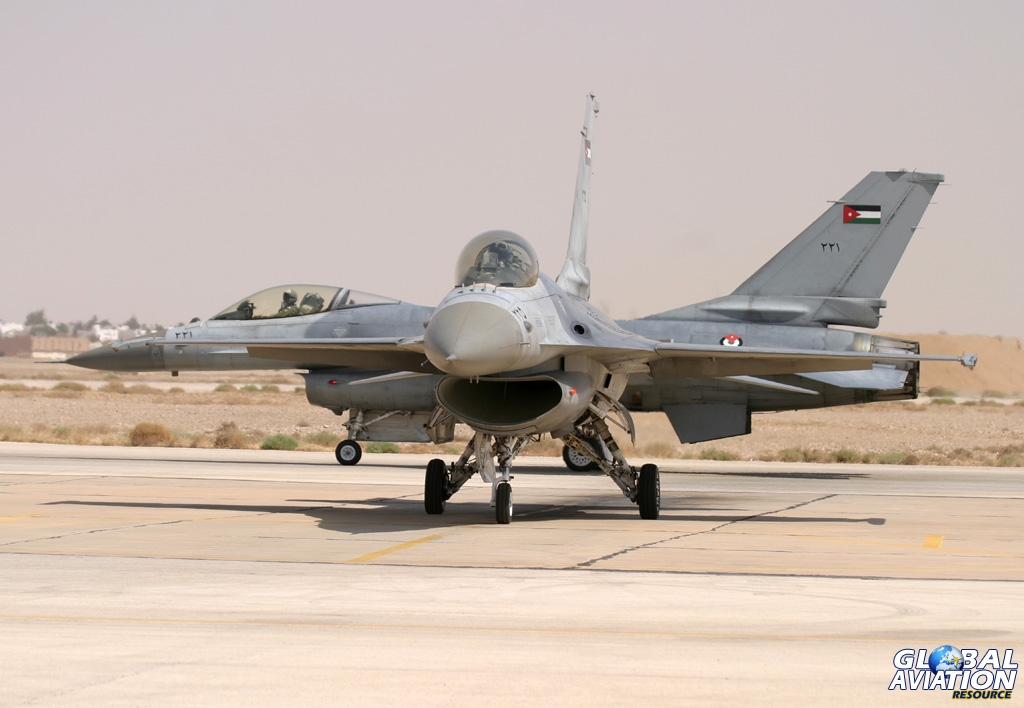
© Kevin Wills – www.globalaviationresource.com
Next time we look at a pilot’s eye view of going to war in an F-16…



